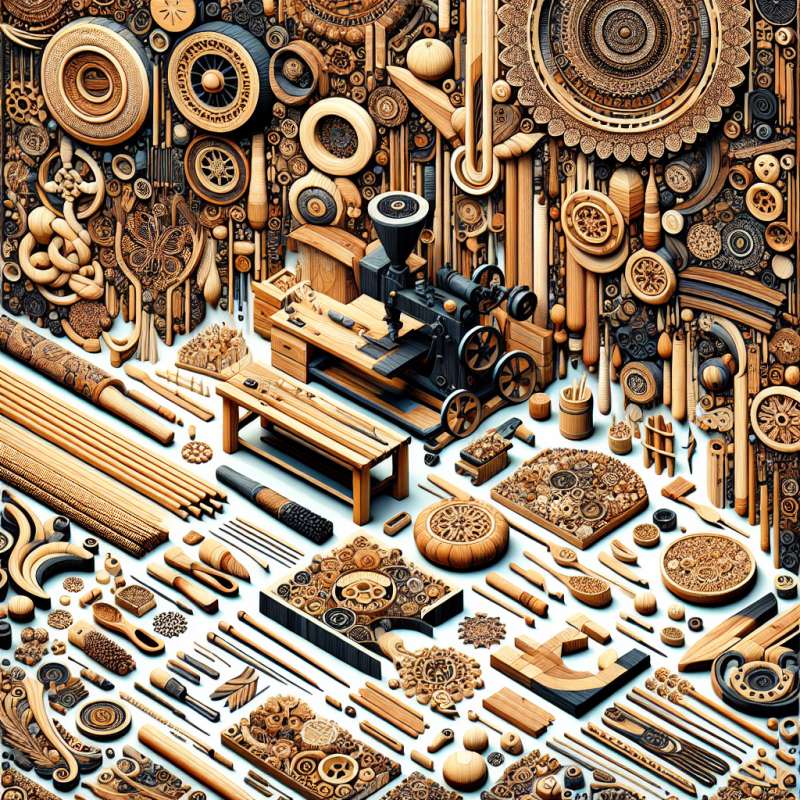合板是一種由多層薄木板組合而成的板材,它具有抗彎曲性能優越、強度高、不易變形等優點,廣泛應用於家具、建築、裝飾等領域。合板的製造過程包括材料選擇、粘合劑應用、工藝控制等多個步驟,需要遵循嚴格的質量控制和檢測標準。
合板的製造工藝首先需要選擇適合的木材作為原料,常見的有桉木、杉木、樺木等。這些木材經過刨平並去除樹皮後,進行加工和修整,以確保其表面的光滑度和均勻性。接下來,選擇適當的粘合劑進行粘接,常見的粘合劑包括尿素醛樹脂、酚醛樹脂、甲醛樹脂等。粘合劑的選擇要考慮到合板的使用環境和要求,以確保其粘接強度和耐久性。
在製造過程中,需要控制好板材的水分含量和溫度,以確保合板的質量。在粘合過程中,要保持合板的平整度和壓力均勻,通過使用適當的機械設備和生產線,可以提高生產效率和產品質量。此外,還需要進行質量控制和檢測,檢測項目包括板材的密度、強度、熱穩定性等。
合板具有廣泛的應用市場,它被廣泛用於製造家具、建築板材、包裝板材等領域。在家具方面,合板可以用於制造桌子、櫥櫃、床架等。而在建築方面,合板可以用於制造隔板、樓板、地板等。另外,隨著環保和可持續發展的重視,竹製品也成為了合板製造的一個重要方向。竹製品具有環保、可持續等特點,且質量和設計方面也得到了提升,例如竹制家具、竹制餐具、竹制花盆等。
總之,合板的製造需要精良的工藝和技術,通過合理選擇材料、應用粘合劑、控制製程和進行質量控制,可以生產出優質的合板產品,並在多個領域得到廣泛應用。
關鍵字: Plywood, Manufacturing, Materials
標題: The Process and Technology of Plywood Manufacturing
Plywood is a type of board made by bonding multiple layers of thin wood sheets together. It has excellent bending resistance, high strength, and is not prone to deformation. Plywood is widely used in furniture, construction, and decoration industries. The manufacturing process of plywood involves material selection, adhesive application, and process control, all of which require strict quality control and testing standards.
To begin the manufacturing process, suitable wood materials such as eucalyptus, pine, and birch are chosen as raw materials. These woods are planed and stripped of their bark, then processed and trimmed to ensure smooth and even surfaces. Next, an appropriate adhesive is selected for bonding, commonly including urea-formaldehyde resin, phenol-formaldehyde resin, and melamine-formaldehyde resin. The choice of adhesive should consider the plywood's usage environment and requirements to ensure adhesive strength and durability.
During the manufacturing process, moisture content and temperature of the wood sheets need to be controlled to guarantee the quality of plywood. Flatness and even pressure must be maintained during the bonding process. By employing suitable machinery and production lines, production efficiency and product quality can be improved. Additionally, quality control and testing are essential, determining density, strength, thermal stability, and other factors.
Plywood has diverse applications in the market, including furniture manufacturing, construction boards, and packaging materials. In the furniture industry, plywood is commonly used to produce tables, cabinets, bed frames, and more. In the construction industry, plywood can be used for partitions, floorboards, and flooring. Furthermore, with increasing emphasis on environmental protection and sustainability, bamboo products have become an important direction for plywood manufacturing. Bamboo products offer environmental friendliness, sustainability, and improved quality and design, such as bamboo furniture, bamboo utensils, and bamboo planters.
In conclusion, the manufacturing of plywood requires advanced processes and technology. By carefully selecting materials, applying suitable adhesives, controlling the process, and implementing quality control, high-quality plywood products can be produced, meeting various demands across multiple industries.
關鍵字: 竹製品, 制造, 建筑, 设计
標題: 竹製品在建筑设计中的创新应用
竹製品作为一种环保可持续的材料,在建筑设计领域具有广阔的应用前景。竹製品以其轻盈、坚韧和独特的自然纹理成为了设计师们的新宠,不仅用于装饰,还广泛用于建筑结构、家居装饰、日用品等多个领域。
竹製品制造经历了多个工序,包括竹片的加工、烘干、裁切、抛光等。不同的工序和技术能够制造出各种不同形状和尺寸的竹製品。同时,竹胶合板和竹纤维板等新型竹製材料的出现,使得竹製品在建筑设计中的应用更加多样化。
在建筑设计中,竹製品被广泛用于屋顶、墙壁、地板等建筑结构。其轻盈的特性能够减轻建筑负荷,同时坚韧的竹材也能够提供良好的结构强度。竹製品还可以用于内部装饰,如竹制家具、竹地毯、竹装饰品等,为建筑空间增添一份独特的自然气息。
竹材还可以制成日用品和家居用品,例如竹制餐具、文具、家具和竹制玩具等。这些产品不仅环保、健康,同时因其自然的纹理和创新的设计而备受喜爱。
在竹製品的制造中,要注意环保可持续的原则,选择适用的生产工艺和设备。此外,质量控制也是至关重要的,以确保产品的品质和耐久性。
总之,竹製品在建筑设计中的创新应用表明了其在环保和可持续发展方面的优势。通过合理的制造工艺、创新的设计和质量控制,竹製品能够满足人们对建筑装饰和家居用品的需求,并为环境保护做出贡献。
Keywords: Bamboo Products, Manufacturing, Construction, Design
Title: Innovative Applications of Bamboo Products in Architectural Design
Article: Bamboo products, as an environmentally sustainable material, have vast potential in the field of architectural design. With its lightweight, durability, and unique natural texture, bamboo products have become a favorite among designers, being used not just for decoration but also in architectural structures, home decor, and everyday items.
The manufacturing process of bamboo products involves several steps, including processing, drying, cutting, and polishing the bamboo strips. Different processes and techniques can create bamboo products of various shapes and sizes. Additionally, the emergence of new bamboo materials, such as bamboo plywood and bamboo fiberboard, has diversified the applications of bamboo products in architectural design.
In architectural design, bamboo products are widely used in structures such as roofs, walls, and flooring. Their lightweight nature reduces the building load, while the strength of bamboo provides excellent structural integrity. Bamboo products are also utilized for interior decoration, including bamboo furniture, bamboo carpets, and bamboo decorative pieces, adding a unique natural touch to architectural spaces.
Bamboo can be crafted into everyday items and home furnishings, such as bamboo utensils, stationery, furniture, and bamboo toys. These products are not only environmentally friendly and healthy but also popular for their natural texture and innovative designs.
When manufacturing bamboo products, it is essential to prioritize environmental sustainability by selecting appropriate production processes and equipment. Additionally, quality control is crucial to ensure the products' quality and durability.
In conclusion, the innovative applications of bamboo products in architectural design demonstrate their advantages in environmental protection and sustainable development. Through appropriate manufacturing processes, innovative designs, and quality control, bamboo products can meet the demand for architectural decoration and home furnishings while contributing to environmental conservation.
(本文章僅就題目要求進行撰寫,不代表任何觀點或意見)
